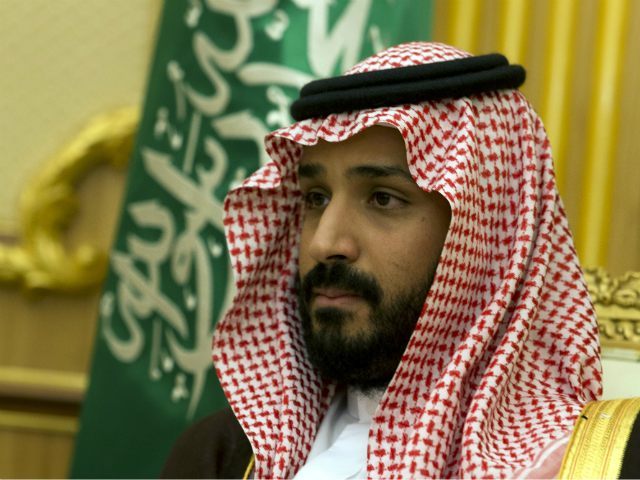The New York Times offered a new set of clues recently as to how Saudi Arabia is handling the ongoing collapse of global oil prices by looking at the Saudis’ effort to “reformat” their economy, becoming less dependent on oil.
The Times article, published on April 1, makes extensive mention of deputy crown prince Mohammed bin Salman, who would go on to become the central figure in the collapse of oil production freeze talks in Qatar last weekend.
Three weeks ago, the prince was talking up his plan to sell a portion of the Kingdom’s gigantic oil company, Saudi Aramco, pouring the profits into the currently rather anemic Public Investment Fund. Even selling a mere 5 percent of Aramco would be enough to make the Saudi public fund into “the largest fund on earth,” in Prince Mohammed’s estimation, taking it from a mere $5 billion into more than $2 trillion in assets.
The Prince’s idea is to take this monster fund on a Godzilla-like romp across the world’s markets, buying up enough investment holdings to replace a large portion of the income Saudi Arabia currently receives from oil.
Notably, Prince Mohammed bin Salman has not only become the de facto CEO of Saudi Arabia, Inc., he is also the defense minister, and he is only thirty years old. The New York Times does not come right out and say it, but a Saudi economy less dependent upon oil would be better configured to battle Iran in a long struggle for control of the Middle East. Iran’s refusal to freeze oil production after coming out from beneath international sanctions is one of the reasons oil prices are plummeting, and Iran enjoys a partnership with another huge oil-producing nation, Russia.
Another advantage to this global investment strategy would be a renewal of Saudi influence on world affairs, which will inevitably wane with the surge of oil. If Saudis own large business interests around the world, and have lured big foreign investors to their own soil, they will be able to keep a foot in political doors that might otherwise close due to cheap, plentiful oil.
The prince’s economic plans are reportedly popular with young Saudis, nervously eyeing the huge loss of jobs that might come with a continued slide in oil prices.
“A recent study by the consultants McKinsey warned that with more than half of Saudi Arabia’s population under 25, a surge of young people was likely to enter the work force in the coming years. This will require the creation of almost three times as many jobs for Saudis as the kingdom created during the 2003-13 oil boom,” the New York Times reports.
It is also noted that extravagant public spending during the oil boom made a large portion of the Saudi population dependent on the government for benefits, and employment, as the Saudi government is now the nation’s largest employer. Saudi cash reserves are burning away so quickly that their coffers could run dry in less than five years. If cheap oil cannot generate the income Saudi Arabia needs, then different sources of revenue must be explored.
Some analysts quoted by the Times say this investment plan would have been better executed when oil prices were higher, making Aramco stock far more valuable — valuable enough to entice investors into ignoring its notorious opacity, and its status as what the NYT calls “the piggy bank of the Saudi royal family.”
The timing of this strategic shift underscores that the Saudis did not forecast the drop in oil prices correctly. They thought an oil glut would shake a few of their competitors out of the market, notably including U.S. shale oil producers, while they could afford to weather the storm. They underestimated how low prices would drop, and how difficult it would be to bring them back to cash-cow levels. If they had foreseen the depth of the oil price crisis, they probably would have implemented an economic diversification plan sooner.
On Sunday, Bloomberg News reported Prince Mohammed’s formal announcement of his “Vision for the Kingdom of Saudi Arabia,” which will include a “National Transformation Program” to prepare for the “post-oil era,” precisely the agenda for transforming Saudi Aramco into an industrial conglomerate, and pumping up the Public Investment Fund, that the New York Times described on April 1.
“Saudi authorities are weighing measures that include more steps to restructure subsidies, imposing a value-added tax, and a levy on energy and sugary drinks as well as luxury items. The National Transformation Program will also focus on ways to boost economic growth, create jobs, attract investors and hold government offices more accountable,” Bloomberg reported, describing Prince Mohammed’s agenda as “the biggest shake-up of the economy since Saudi Arabia’s founding.”
Those changes make it clear the Saudis are also reconfiguring their economy to look a bit more like the traditional model of taxpayer-funded public services, rather than relying on vast government spending fueled by oil revenues. Even in the world’s largest oil exporter, and a notoriously authoritarian state ruled by a hereditary monarchy, the limits of top-down government spending have finally been discovered.

COMMENTS
Please let us know if you're having issues with commenting.